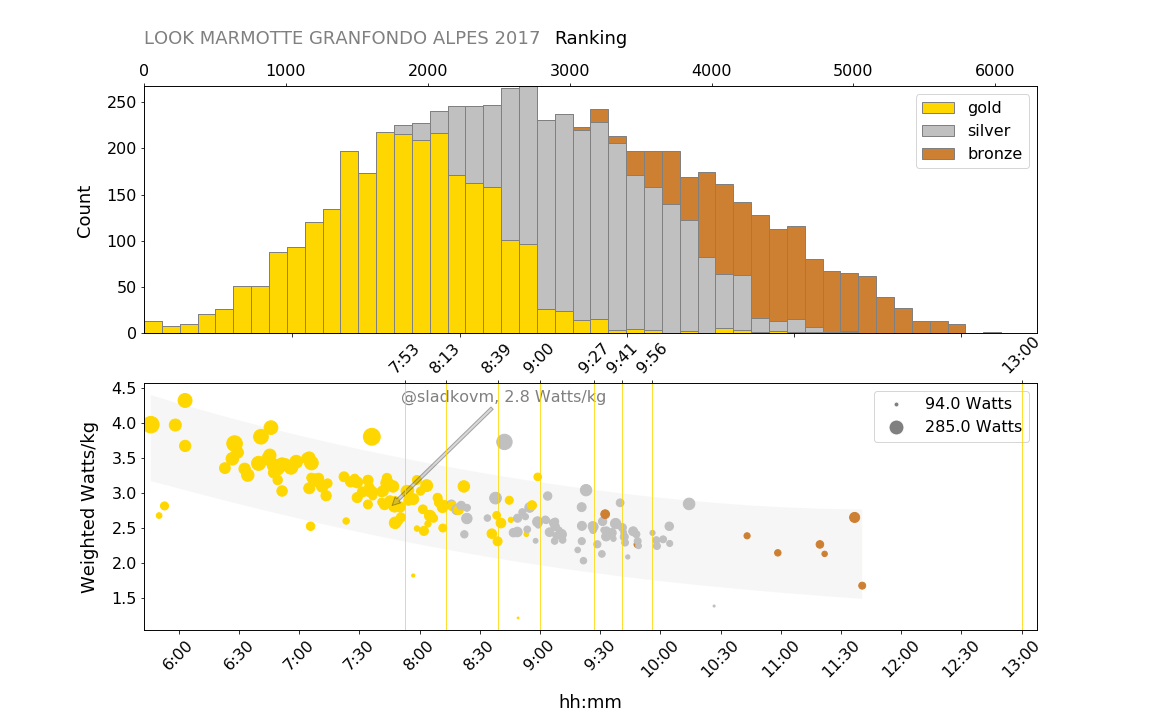Watts per kilo galore at La Marmotte des Alpes
After looking at how much Watts is needed to be competitive at La Marmotte des Alpes, I could not resist and went full assault on Strava services to collect Watts per Kilo information. After all, La Marmotte offers beaucoup climbing meters and WPK is the only relevant metric for virtual competition.
Going to the dark side
In contrast to collecting Watts, the athlete weight can not be fetched using the Strava API without explicit users permission. This is in theory. In practice, it is always possible to go some extra technical mile and get anything you want from internet.
I hope that Strava will not judge me harshly. After all, I am not exposing any user’s sensitive information and my only goal is to celebrate the real efforts the amateur cyclist produce during the granfondo races.
Weight is important, but Watts are importanter

I’ve plotted the weighted Watts/kilo as a scatter plot. The size of each point on a plot represents the actual power.
Results are grouped according to the medal earned and coded into graphs as gold, silver and bronze respectively.
The boundaries between different medals distributions are soft due to the fact that the time-cuts are different for each age category. I’ve shown the time-cuts for gold performance as vertical grid lines.
The grey-shaded band behind the scatters represents the prediction intervals calculated using power-time regression model.
What I found the most remarkable is that top-100 riders can sustain the mind blowing 4.0 Watts/kg not only because they are feather weight, but mainly due to the high absolute power output.
For the rest of us - middle aged men with families, full time jobs and data crunching hobbies, the 2.8 Watts/kg over 8 hours would be more than sufficient to ride gold at La Marmotte des Alpes.
Details of my ride can be found on Strava.